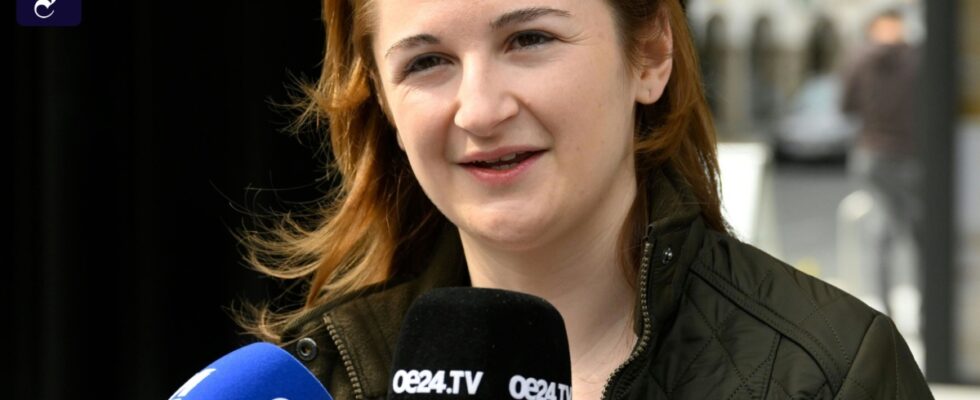In the Austrian state of Salzburg, the right-wing FPÖ has made significant gains in the state elections and is fighting for first place with the Christian Democratic ÖVP of state governor Wilfried Haslauer. According to projections by various institutes, the Christian Democratic ÖVP suffered significant losses and received around 30 percent. The FPÖ was behind with a good 26 percent. She left the social democratic SPÖ, so far number two in the country, far behind.
This is the best FPÖ result in Salzburg so far, stronger than in the days of former FPÖ leader Jörg Haider. The opposite edge of the party spectrum is also being strengthened: from the previous parliamentary nothing, the communist KPÖ Plus came up with 9 to 11 percent.
The SPÖ, which had already done poorly in the last election in 2018 with 20 percent, lost further percentage points and received between 18 and 19 percent. This is the historically worst result in Salzburg, but the Social Democrats said they were relieved because even greater losses had previously been forecast. The Greens were also weakened and received 7 to 8 percent. The liberal neos are likely to have failed at the five percent hurdle and will no longer be represented in the Salzburg state parliament.
“Black-blue” as the only possible two-party coalition
So far, a coalition of ÖVP, Greens and Neos has ruled in Salzburg, which is referred to as the “Dirndl coalition” because of the party colors turquoise, green and pink. This constellation will definitely no longer be possible. The FPÖ’s top candidate, Marlene Svazek, made a claim to government participation.
“Black-Blue”, i.e. ÖVP and FPÖ, is likely to be the only variant of a two-party coalition with a stable majority. A three-party coalition with ÖVP leadership would also be possible. Haslauer spoke of the need to form a “viable government”. He will talk to all elected parties, said the governor, but pointed to the big differences to the KPÖ in the social image. But Haslauer also admitted: “The loss of votes is very painful for us.”
In 2018, the ÖVP experienced a strong upswing, also thanks to the federal political impetus provided by the then Chancellor and ÖVP leader Sebastian Kurz, and received almost 38 percent of the votes. The crisis of the ÖVP since the fall of Kurz as well as chat and advertising affairs made a significant slump to be expected. In addition, there is a high level of dissatisfaction with inflation and controversial pandemic management. This mixed situation had already led to significant losses for the governing parties in other state elections in the recent past, whether the provincial governors belonged to the ÖVP, as in Tyrol and Lower Austria, or the SPÖ, as in Carinthia.
In all cases, the beneficiary was the FPÖ. Your party leader, former Interior Minister Herbert Kickl, has positioned the FPÖ as a fundamental opposition, whether against corona prevention or EU sanctions against Russia. The FPÖ won in all state elections and, according to polls, is currently in first place in the federal government with up to 30 percent. Kickl claims the chancellorship should the FPÖ be elected first in the national council elections scheduled for autumn 2024. In Salzburg, the FPÖ is led by the former federal party leader Marlene Svazek, who appears more moderate in tone, but is entirely on Kickl’s line.
A special feature is the appearance of the KPÖ. For about half a century the communists had practically no supra-regional importance in Austria, but they managed to gain entry into the provincial parliament first in Styria and now also in Salzburg.
On the one hand, the KPÖ apparently benefits from the weakness of the SPÖ, which is currently engaged in a leadership dispute with itself. On the other hand, they also represent competition with the Greens on the political left. Some time ago, a group split off from the Greens switched to the Communists, which appeared in Salzburg as “KPÖ plus”.
